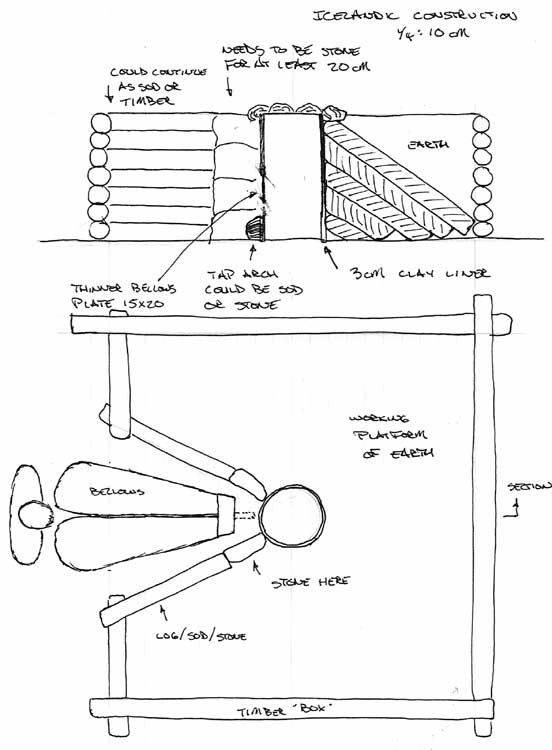Approaching Remembrance Day...
I had commented earlier about the effect of World War 1 on Ypres:
 |
| Market Square, Ypres, 1916 : Before and After |
Part of the extension of my OAC Project Grant was my travel and participation in the Ypres 2016 international blacksmithing event (several earlier commentaries).
As might be expected, it is impossible to visit Ypres without being immersed in World War 1.
To back up a pace, here was the 'Artist Statement' that I wrote to accompany my design submission for the Ypres 2016 Memorial :
I may not have the kind of direct lineage of involvement with Ypres, or even the First
World War, that many other contributors may have. In my case, all my direct
grandparents died in their early 50’s, when both my mother and father were themselves
very young children.
I am clearly a child of North America in the the Sixties, the paranoia in the midst of
plenty which was the Cold War. I was a serving member of the Canadian Armed Forces
Reserves when I was in my late teens and early twenties. Both my units, the Hastings
and Prince Edward’s and the Toronto Scottish, were regiments who had fought at Ypres
in 1917. As young men of that same age as those who suffered at Ypres, we were
pulled by similar forces. We certainly were frequently reminded of battle honours bought
so expensively. This was the early to mid 1970’s, at the end of the Viet Nam War. I was
trained by those who had participated, and have close friends who fought in, that
particular brand of insanity. Honestly, my own time and place made it hard to
understand just how those other young men had been driven so willingly to their
destruction.
I personally had intended in visiting Europe at some point over the next few years, to
allow me to visit the battlefields in my own pilgrimage of remembrance. I turned 60 this
year, I know I’m not going to see the same commemoration of WW 2. As a Canadian,
who as a people are so tied to the Land, I know partial understanding will best come
from walking the same ground.
...
‘And Age Shall Not Tarnish Them’ is most certainly not a design that highlights the most
sophisicated blacksmithing technique. Personally, I feel to concentrate too dramatically
on art forging may actually detract from the intention of the Monument overall. I have
attempted instead to picture a ‘view from the mud’. Where the same day to day suffering
was endured by all those soldiers who were involved. In the face of the raw conditions
imposed on all, the thin veneer of ’nationality’ was stripped away, or covered in the
same way the gas masks obscured all traces of the individual.
Walking around the central core of Ypres, its hard not to see much of what surrounds you as a kind of shrine to the destruction of WW1. The ghosts are not hidden, more like a light fog that lays down everything. I did not find it oppressive, but it most certainly was omi-present.
Beyond my direct involvement with the Ypres 2016 project, I also made two specific side trips, one to Sanctuary Wood, with its original trench system preserved, and one to Passendale. Once a young soldier myself, I wanted to walk that same ground.
It was hard for me not to see that past at almost every turn.
I found the atmosphere around Ypres itself strange. It is so clear that the massive reconstruction effort undertaken in the 1920's was intended to re-create, almost exactly, what had been lost to war destruction. (Of note is that Ypres had been destroyed by war once before, burned to the ground in the late Middle Ages.) In this the town is like a shrine to World War 1. Its hard not to feel a kind of scitzephrenia, locked to a memory of a horrible past, while modern life continues at the edges.
******
Later at the Scottish Sculpture Workshop, part of my OAC Project Grant included two weeks intended for 'personal project'. My original schedule was to concentrate on medium scale bronze casting work.
In the end, I did make some use of the ceramics studio as well. Personally, as an artist, the time I spent there proved extremely valuable, both in terms of expanding possibilities and freeing conceptions.
Opportunities for collaboration are rare for me, both because of the technical aspects of my normal work, and primarily because my studio is remote and pretty much a solo activity. The Tocca Ferro* project was exactly the kind of thing that can spring from a random comment during a general conversation, while working in the same space as another artist.
 |
| 'Ypres 1916' - ceramic + Tocca Ferro, 2016 |
A number of small ceramic pieces were made for the original test of the Tocca Ferro process. My contribution was a set of small 'building fronts', based on the architectural styles I had seen at Ypres.
On the first stage bisque firing, the larger piece, made of a buff clay, shattered.
The remaining two pieces were subjected to Tocca Ferro, with quite different results. The middle piece did survive the heating process, but broke during cooling. The last piece emerged fused and half melted.
Taken as a grouping, the random 'destruction' of the individual pieces echoes the destructive forces of the WW1 bombardment at Ypres.
* The exact method of the Tucco Ferro process is being kept a bit vague at this point. A formal description is in the works by fellow collaborator Katriona Gillespie.







































